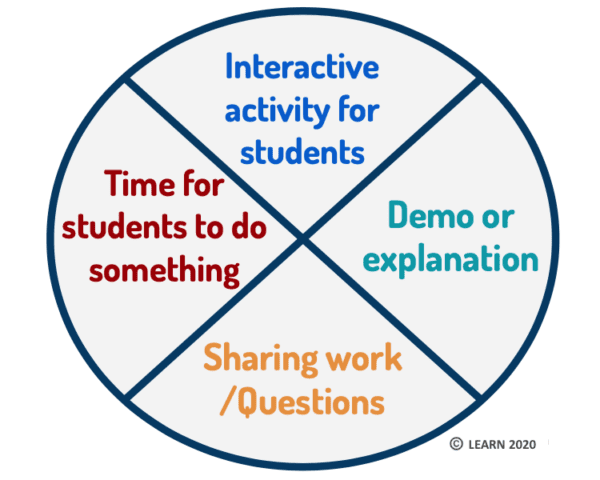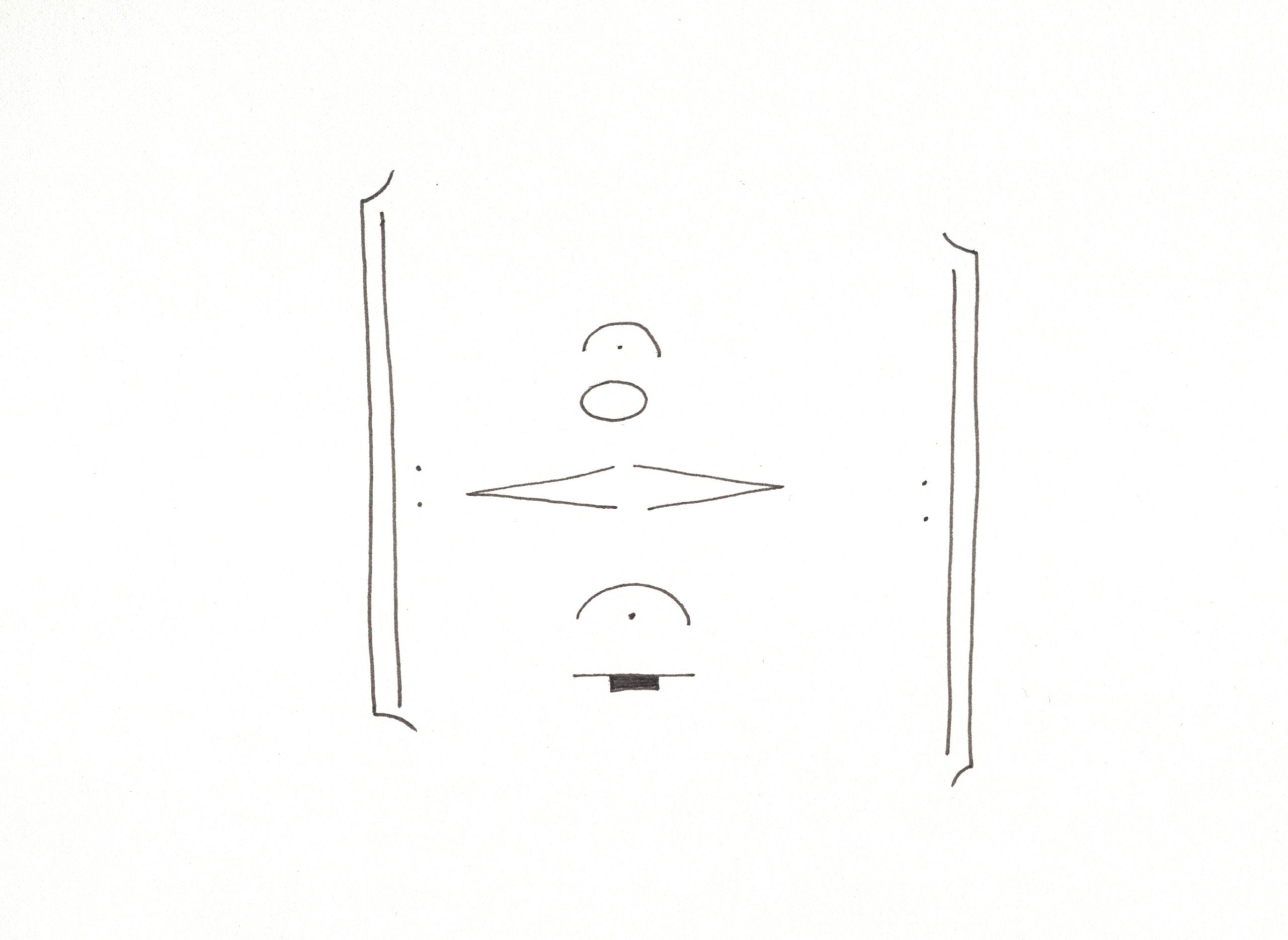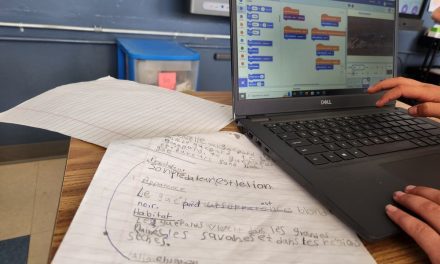Many teachers and students across the province are having to adapt these days to some form of online or hybrid teaching and learning. Navigating the technology is one thing, but sustaining student motivation and engagement at a distance is another. This blog post looks at some ways of increasing student engagement and accountability in online learning scenarios. You may also be interested in music teacher Lynn Harper who shared her planning strategies in this post earlier this school year.
Chunking your time
When planning each online session it is helpful to ask yourself what students go through on any given school day. How long are they being asked to sit in front of the computer? What do they do in their other classes? Are most classes lecture-based, where students are required to sit and absorb information given by the teacher for long swaths of time? The Arts provides students with a much-needed respite from information-based classwork.
Each of your sessions, be they 60 or 75 minutes, can be structured to include a variety of ‘activity types’, that help students to move through different ways of learning, in order to stay engaged and (hopefully) on task.

Chunking Time for Online Learning
When I teach dance online, I like to chunk my sessions into four types of activities: an ‘interactive activity for students’, a ‘demonstration’ of some sort, a ‘time for students to do something’ as well as leaving time for ‘sharing work or asking questions’. Sometimes, when teaching choreography for instance, the ‘activity types’ might interweave, and certainly they do overlap. This framework allows me to plan sessions that are engaging and varied for learners and for myself – while ensuring that I am not the one doing all the work in a class! Keeping a balance between active teacher and active student is key. This model of ‘chunking time for online learning’ can be applied to all the Arts – but keep in mind the order of these activities is determined by your intention.
The order that follows is not prescriptive!
Demo or explanation
This is the most obvious and self-explanatory ‘activity type’: it’s where we clarify or explain an assignment to students or show them how to do something, be it a technique, a step, a way of playing etc. It is a time when mainly the teacher is active, so I keep these moments short, and spaced out if possible. I rarely start with this step at the top of a session.
Time for students to do something
We are fortunate in the Arts to teach very practice-based subjects. We do not lack for things for students to do – and those things can be done during an online session, as long as we build in a little accountability to help students stay on task. Students can work on a longer assignment during class time, just like they would in your brick-and-mortar classroom. The key is to build in accountability by asking students to submit traces of their process to you. Lynn Harper (NFSB) asks her music students to record themselves practicing, or their in-progress compositions and brainstorms. Martin Labrie (RSB) has his online students do a sketching warm-up as they come in, while Martin takes attendance – a holdover from a regular classroom practice already familiar to students. Students can also take photographs or videos of their work in progress using their device (iPad, laptop) and submit them through your school’s chosen platform (Teams, Google Classroom etc).
Sharing work or asking questions
A studio practice involves students sharing work to give and receive feedback. This involves building trust and protocols for feedback, such as focusing on positive aspects, as well as sentence openers like “I notice _______ in your work” or “I liked it when you ________”.
I often give students a chance to work on some movement sequences and then ask them to share with the rest of the group – but only when we have established a context of trust.
Interactive activity for students
Allowing students to interact readily and often with content and with each other cements their engagement in your Arts subject. It also allows students who may not have a lot of intrinsic motivation for a particular art form to participate and gain momentum through action. Interaction doesn’t have to be complicated, and can be as simple as engaging in the chat. The MAD2 team used the straw poll generator AnonVote to create a quick check-in activity at the top of our session when we asked participants what painting best matched their current mood. Voting in polls, participating in online brainstorming using Google’s JamBoard or utilizing your platform’s whiteboard capabilities are quick ways of getting students actively involved as a countermeasure to the endless distractions at their fingertips at home. I often start with an interactive activity.
Web recording of the MAD2 Arts Connection session that features this chunking method
Why chunk sessions in this way?
The reasons for chunking time for online classes are many, but for me it comes down to two main reasons: the availability of plentiful distractions and connecting with each other.
Plentiful distractions
Students at home are surrounded by distractions that you can’t control. The best way to compete for their attention is to keep things moving – which is good for their energy levels and for their brain. In your regular in-person classroom you can often count on collective energy to carry people and on discussions that emerge spontaneously. This is much rarer online, and requires a group that has solidly gelled into a learning community.
Connecting with each other
Students are used to connecting with each other using technology. They may surprise you with their ability to collaborate and generate ideas collectively. Creating something together, even something as banal as a group brainstorm, or shared thoughts around a common piece of work is another paving stone towards a true community of learners, which, ultimately will make both online and in-person sessions much richer for everyone.
Useful links
MAD2 Google Drive folder with resources discussed in Arts Connection online sessions. Link to folder
5 reasons to let students keep their cameras off during Zoom classes. Link to article
Privacy vs. community: Should schools require students to turn on cameras? Link to video
‘The Show Must Go Online’: Arts Teachers Adapt to At-Home Instruction. Link to article
27 Art Activities and Lessons to Try at Home. Link to article
Featured Image Credit: Robert Keane via Adobe Spark





